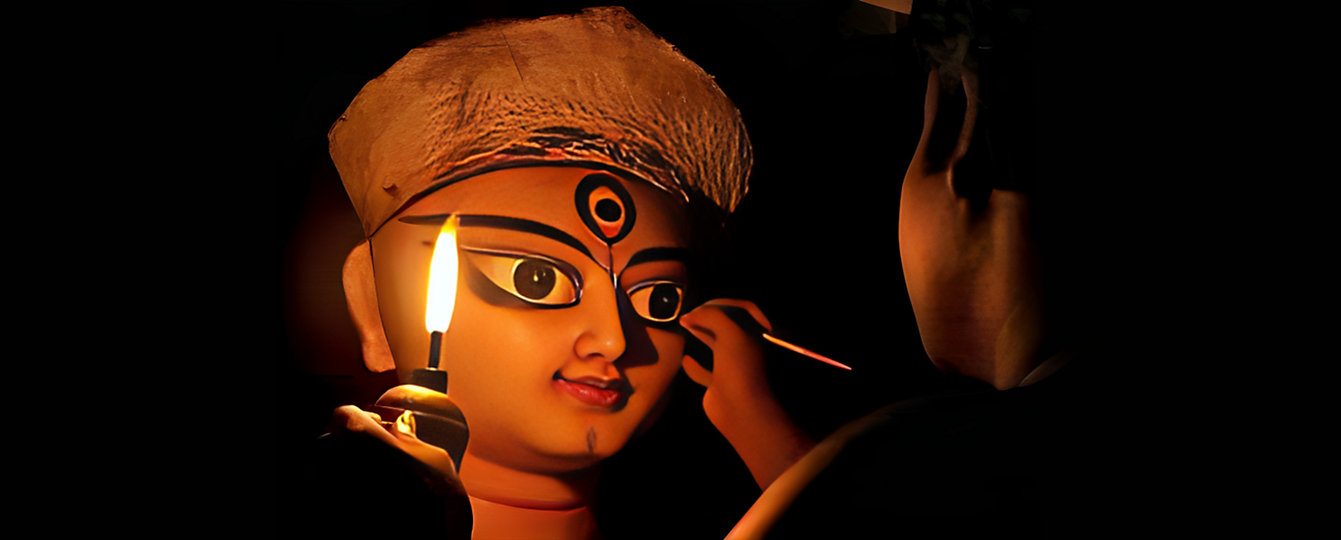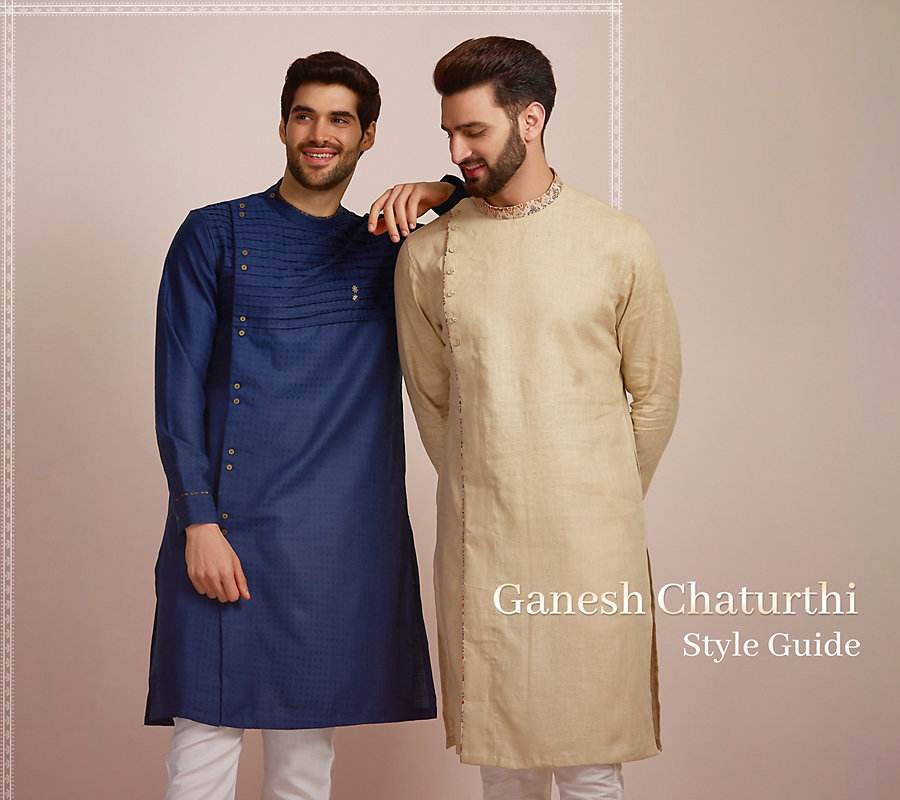
A Journey Through the Vibrant Celebrations of Durga Puja and Navratri Across India
As the monsoon clouds scatter, making way for the twinkling festivities of autumn, India - a land of astonishing diversity and ancient traditions - prepares for a celebration that transcends regional boundaries and linguistic differences. Durga Puja and Navratri are beyond festivals; they bring together communities, beliefs, and culture for a nine-day celebration of art, fashion, food and traditions.
Let us explore some time-honoured traditions across different states, through a kaleidoscope of culture and fashion that is as diverse as the people.
The Soul of Bengal
For the people of Bengal, Durga Puja is an emotion, a phenomenon. Every street becomes a living, breathing canvas, displaying intricate 'pandals' that house the goddess, Durga. These architectural marvels often replicate famous monuments or encapsulate various themes from environmental conservation to social issues.
The festival is a celebration of Goddess Durga's triumph over Mahishasura, a demon who was invincible until the goddess, born from the collective energies of all gods, vanquished him. The five-day extravaganza is a time when the traditional hymns meet the modern beats of 'Dhak,' a drum that reverberates through the city, as if waking up the gods and the 'Dhunuchi dance,' performed with earthen pots filled with burning coconut husks.
Men often don the traditional Kurta Pajama or the Dhoti-Kurta ensemble. The fabrics range from light cottons and linens to lustrous silks, and the designs can be intricate, featuring subtle embroidery.
Women, on the other hand, are a vision in red and white sarees, the colours symbolising purity and power. The 'laal paar' saree, with its red border, is particularly popular, accessorised with traditional 'Shakha and Pola' bangles made of conch shell and coral.
The Rhythmic Heartbeat of Gujarat
The word ‘Navratri’ is derived from 'nava' (nine) and 'ratri' (night). Gujarat, known for its entrepreneurial spirit and vibrant culture, transforms into an amphitheatre of dance and devotion.
Celebrating the different forms of Goddess Durga, devotion and celebration converge in two ritualistic dance forms —Garba and Dandiya Raas - performed in concentric circles, symbolising the cyclical nature of life and time.
Men traditionally wear 'Nehru Jackets' or 'Kurta Pajama Sets' and 'Kurta Dhoti Sets,' garments that are functional and stylish, allowing for the intricate footwork and rapid movements that Garba and Dandiya require. The outfits are often adorned with embroidered patches and mirror work, a craft that has been passed down through generations. Black kurta pajamas for men with maroon dupattas are a popular choice during the Navratri.
Women are a swirl of colours in their 'Chaniya Cholis' and 'Ghagras,' elaborately designed with beads, shells, and embroidery. The ensemble is often completed with 'Odhanis,' a type of stole that adds grace and vibrance to the outfit.
The Spiritual Revelries of South India
The onset of the autumnal festive season in the South is a more introspective affair. It's a time when homes turn into sanctuaries, adorned with 'Golu,' a stepped display of dolls and figurines that tell tales from Hindu mythology.
The rituals often led by women, include 'Vratams,' or fasts, where devotees abstain from certain foods to purify body and soul and 'Kolams,' intricate floor designs made with rice flour, inviting both the Goddess and prosperity into homes.
Men often wear 'Mundus' and 'Angavastrams.’ The Mundu, a type of sarong, is often white or cream, symbolising purity, while the Angavastram, a shawl worn over the shoulder, is a marker of respect.
Women opt for 'Kanjeevaram' sarees, woven with threads of gold and silver, paired with traditional gold jewellery. The rich colours—often deep reds, greens, and blues—are symbolic, each hue representing a different form of the Goddess.
The Communal Spirit of Punjab
Navratri in Punjab is a unique blend of Hindu and Sikh traditions that brings together the worship of Goddess Durga with the teachings of Sikhism. Communities come together to sing devotional songs and listen to stories from Hindu epics in all-night prayer meetings called 'Jagratas.' Embodying the spirit of selflessness, the 'Langars,' community kitchens serve free meals to all, irrespective of religion or caste.
In this devout atmosphere, clothes serve as an extension of one's faith and community spirit. Men often wear 'Pathani suits,' a loose-fitting ensemble that is both comfortable and elegant, allowing ease of movement for long hours of prayer and community service. Women usually opt for 'Patiala suits,' characterised by their loose-fitting trousers and vibrant colours. The ensemble is often completed with a 'Phulkari' dupatta, an embroidered piece of art done in vibrant colours.
The Majestic Canvas of Maharashtra: Navratri
In Maharashtra—land of warriors and saints—Navratri is a robust fusion of spirituality, martial arts, and community, echoing the state's history of valour and devotion. The 'Bhondla,' a folk dance where women get together to sing peppy songs and dance, is performed on each day of the Navratri and the rituals also include the devotional 'Aarti,' sung in praise of the goddess.
Men traditionally wear 'Dhotis' and 'Phetas'—turbans that signify honour and respect. The Dhoti, often saffron or white, is a symbol of purity, while the Pheta, usually in vibrant colours like red or saffron, adds regality to the ensemble.
Women wear 'Nauvari' sarees, a nine-yard wonder that is both royal and simple. The saree is often worn in a manner that allows women to move freely.
Durga Puja and Navratri are a living, breathing narrative. They are stories that each region tells in its own unique voice, but stories that resonate with a singular essence - of disregarding communal boundaries and celebrating together. As you prepare to partake in this magnificent carnival, find the right kind of ensemble and embrace the festive spirit. Explore the finest range of festive outfits to elevate your celebrations here!








